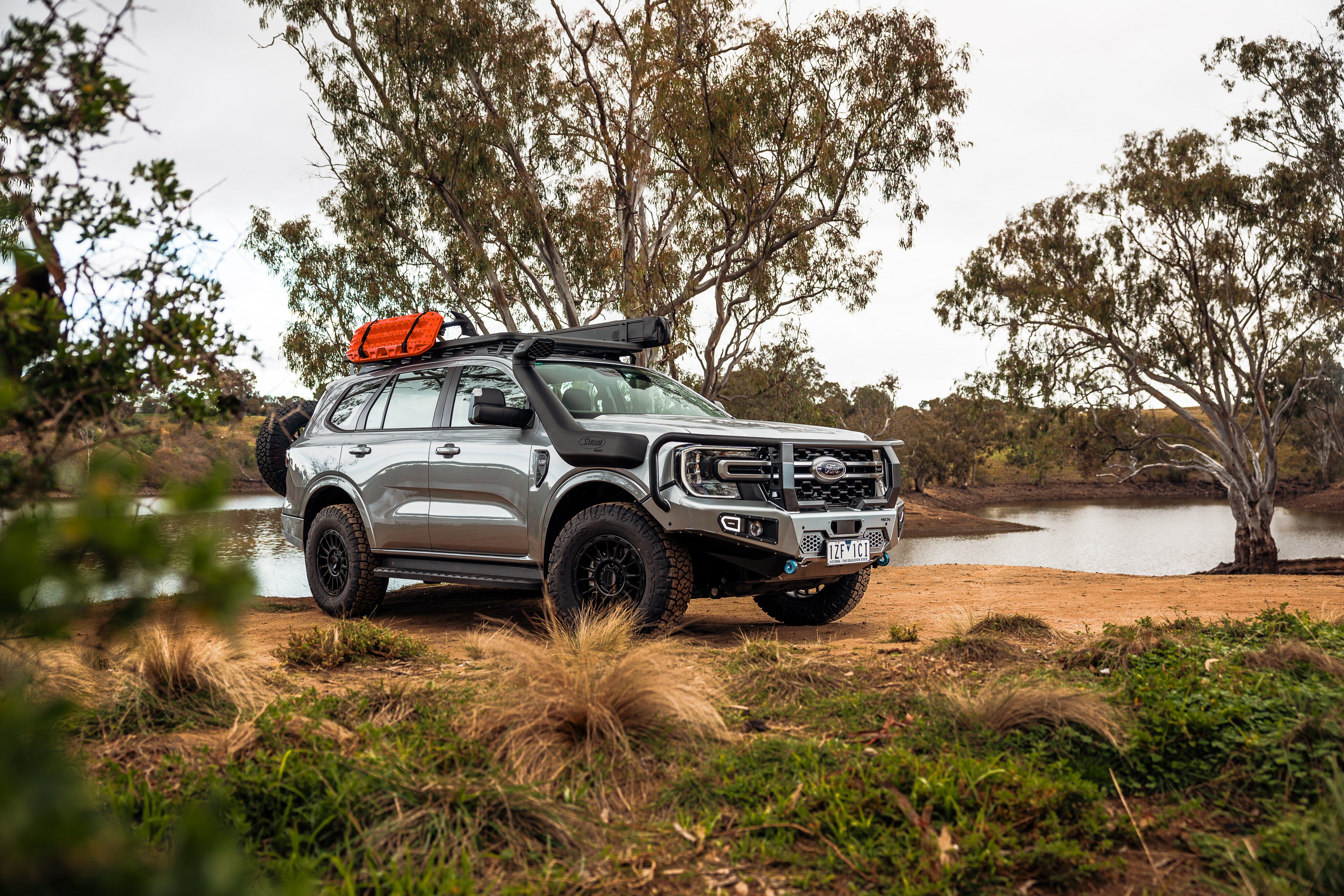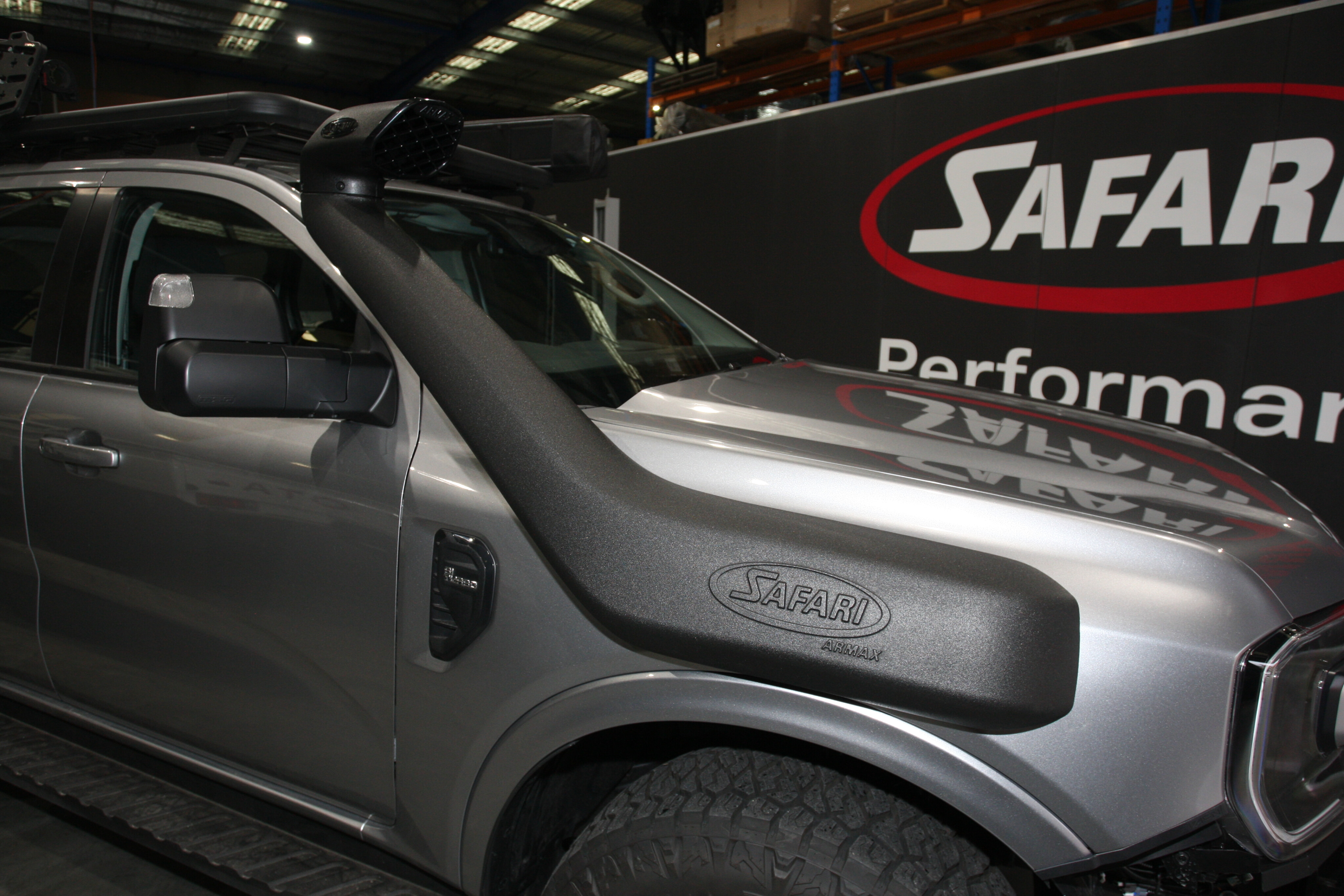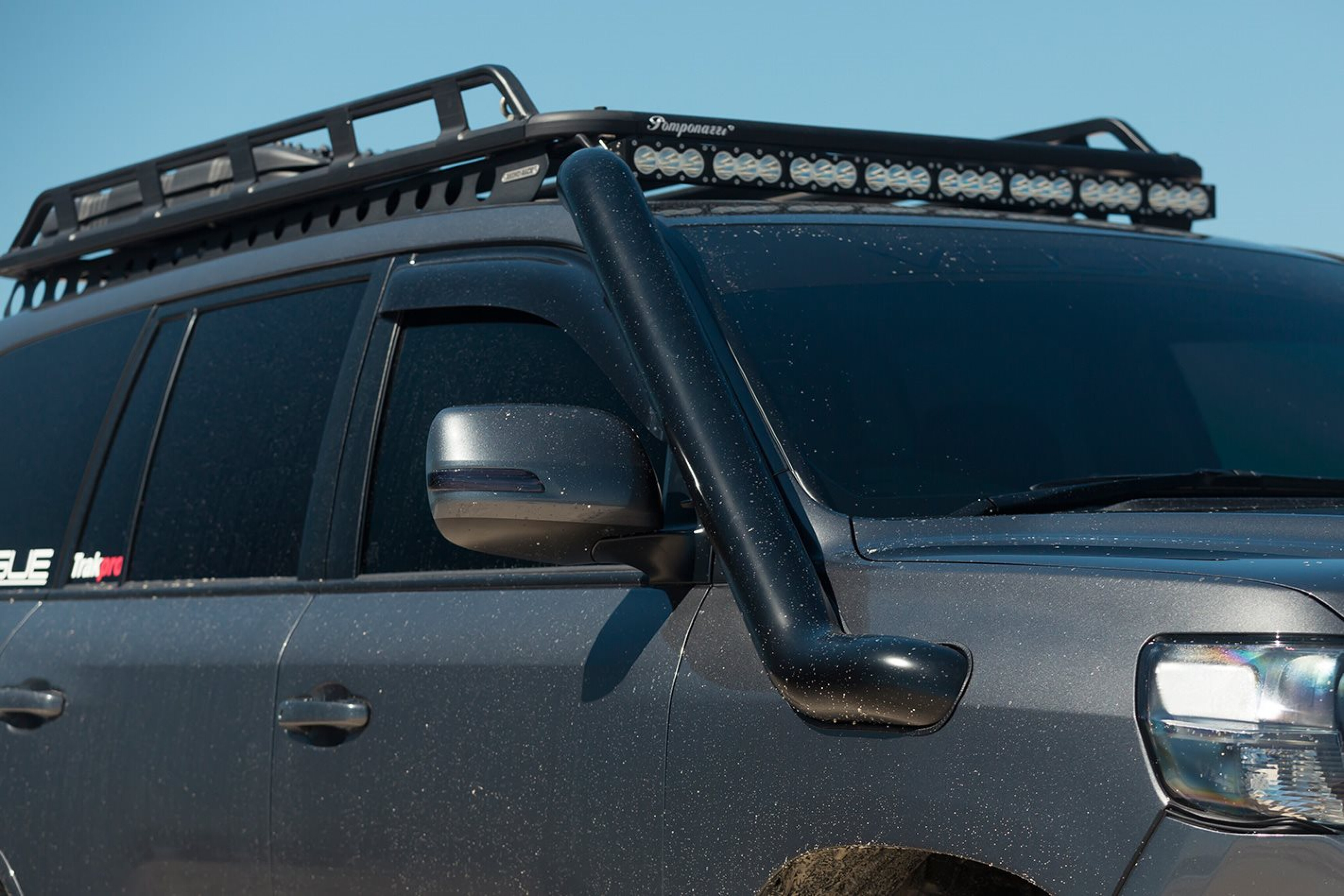
Every serious off-road vehicle needs a snorkel. This essential tool not only helps vehicles navigate deep water crossings but also elevates air intake, allowing cleaner, dust-free air to reach the engine.
In a typical vehicle, the air intake is often located in the inner wheel arch or under the hood. These positions can expose the intake to dust, heat, and water, which can hinder engine performance. By installing a snorkel, the air intake is raised to a higher, cooler position, reducing the chances of dust contamination. Cooler, cleaner air is vital for optimal engine performance, making it easier to tackle challenging terrains like Big Red.
A well-sealed snorkel system protects your engine from water and dust ingress while ensuring a constant supply of cleaner air. Additionally, a well-designed snorkel enhances the vehicle's appearance – so as an affordable upgrade, a snorkel improves both aesthetics and functionality, making it especially valuable for those planning off-road adventures.

Essentially, sealed snorkels prevent water and dust from entering the engine, while unsealed options prioritise air intake but lack water and dust protection. As a result, serious off-roaders typically choose a sealed snorkel over an unsealed one, as the latter struggles in dusty or wet conditions.
The market is generally covered by stainless steel and plastic (poly) options, with plastic ultimately being the most popular for its wider range and cheaper price point. Plastic units typically sit more flush against a vehicle and are quieter; stainless steel snorkels are tougher, and will withstand damage more than plastic models. In the end it’s personal preference when it comes to construction.

Quality aftermarket snorkels are designed for specific vehicles, while cheaper alternatives may not fit properly. Investing in a high-quality snorkel from a reputable supplier can be one of the best decisions for your off-roading endeavours, ensuring your engine remains protected during your travels. Remember that extensive testing and development goes into a quality snorkel, so purchasing from a trusted brand ensures reliability and minimal impact on your vehicle’s performance.
Manufacturers usually provide detailed installation instructions for DIY enthusiasts. Those with tool-handling experience can fit snorkels in a few hours. However, cutting into your vehicle's body can be daunting, so it’s wise to consider professional installation if you're not comfortable with metalwork. It's also crucial to follow the manufacturer’s guidelines to maintain your vehicle warranty regarding water wading and general use. During installation, make sure to treat all holes for rust protection and ensure that all parts are properly sealed.



COMMENTS